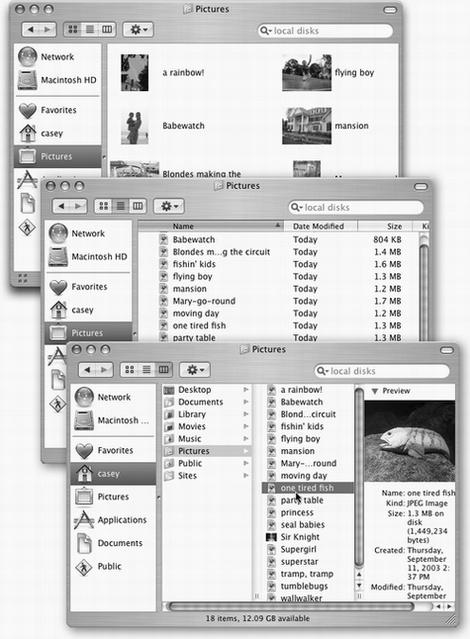You can view the files and folders in a desktop window in any of three ways: as icons; as a single, tidy list; or in a series of neat columns. Figure 1-12 shows the three different views.
Every window remembers its view settings independently. You might prefer to look over your Applications folder in list view (because it’s crammed with files and folders), but you may prefer to view the less populated Users folder in icon view, where the larger icons are easier to double-click.
To switch a window from one view to another, just click one of the three corresponding icons in the window’s toolbar, as shown in Figure 1-12.
Figure 1-12. From top: The same window in icon view, list view, and column view. Very full folders are best navigated in list or column views, but you may prefer to view emptier folders in icon view, because larger icons are easier to click. Remember that in any view (icon, list, or column), you can highlight an icon by typing the first couple letters of its name. In icon or list view, you can also press Tab to highlight the next icon (in alphabetical order), or Shift-Tab to highlight the previous one.
You can also switch views by choosing View→as Icons (or View→as Columns, or
View→as List), which can be handy if you’ve hidden the toolbar. Or, for less mousing
and more hardbodied efficiency, press ![]() -1,
-1, ![]() -2, or
-2, or ![]() -3 for icon, list, or column
view, respectively.
-3 for icon, list, or column
view, respectively.
Get Mac OS X: The Missing Manual, Panther Edition now with the O’Reilly learning platform.
O’Reilly members experience books, live events, courses curated by job role, and more from O’Reilly and nearly 200 top publishers.


